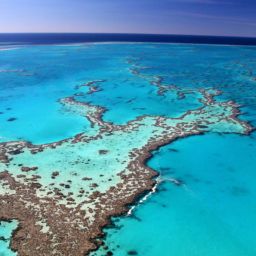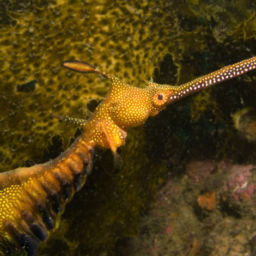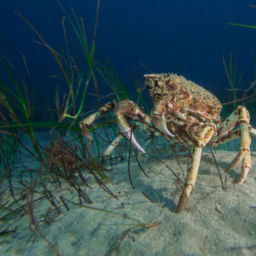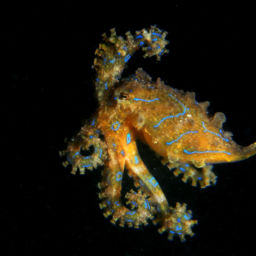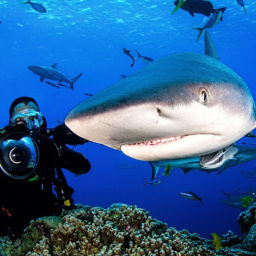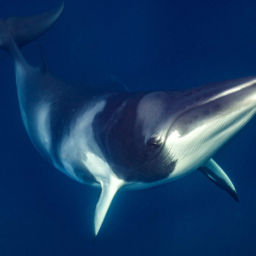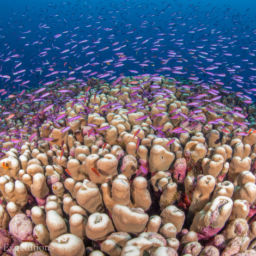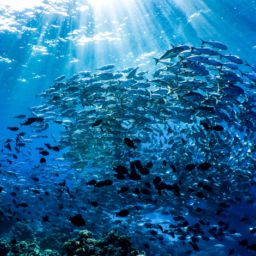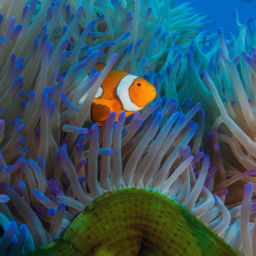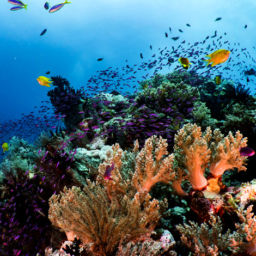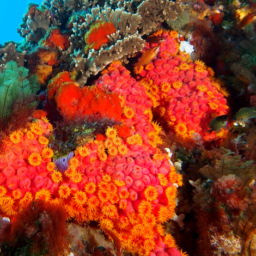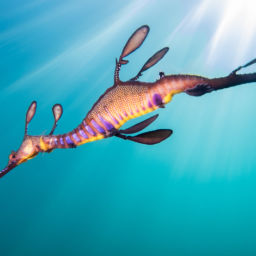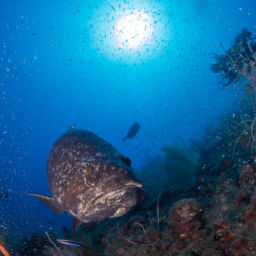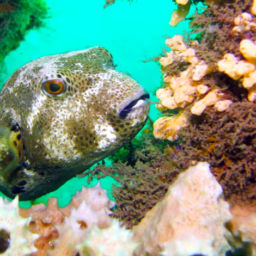Descending the clear water of the Great Barrier Reef off the coast of Townsville, the spires of Jason deCaires Taylor’s Coral Greenhouse come into view fairly quickly. The Museum of Underwater Art in Townsville (MOUA) has been on my dive bucket list for months. However, with many of Australia’s domestic borders closed, it’s been out of reach, until recently. The experience is better than I imagined.
Diving the Museum of Underwater Art
Not long after the Queensland border opened to New South Wales, I had an opportunity not just to dive it, but to witness the beginning of the next phase of this installation: coral gardening.
As I descend toward the coral greenhouse, I can see several ghostly, life-size figures standing around the main structure. There are some tall, tropical-looking trees on the lagoon’s sandy bottom. On closer inspection, I realize all these figures, the Coral Greenhouse’s Reef Guardians, are tending this garden in some way. Some hold planters, some hold pruning clippers and gaze at the trees; some hold watering cans; and some squat on the sandy floor, contemplating a patch of garden.
As we enter the greenhouse, a school of barracuda joins us, completely unfazed by our bubbles. Above us large batfish weave in and out the spires of the structure. Smaller reef fish flit about the hanging planters and among the soft corals already growing on nearly every surface. Nearby, large pufferfish peers at me from behind a large plant pot.
Four planned structures
This beautiful installation, inspired by both reef and rainforest, is the second of a planned four structures to be installed as part of deCaires Taylor’s Museum of Underwater Art in Townsville.
The first, Ocean Siren, stands above shallow water on The Strand in Townsville. DeCaires Taylor modeled the sculpture on a local young Wulgurukaba girl, Takoda Johnson. The Siren illuminates at night and glows in different colors, indicating live water temperature data from Davies Reef weather station on the Great Barrier Reef. The sculpture is not only beautiful, but also shares a crystal-clear message — and warns — of the ocean’s increasing temperature and the implications that has on the reef.
Two more are planned, one at Magnetic Island, and one on Palm Island, which is largely populated by a mix of indigenous groups. The planned installation will reflect the island’s indigenous history and its cultural connection to the ocean.
The Coral Greenhouse
The Coral Greenhouse is deCaires Taylor’s first-ever underwater architectural structure, and the sculptor wanted the installation to offer opportunities for scientists, marine students, and tourists to engage in action-based learning and to conduct research on coral reef restoration.
Located approximately 50 miles (or 80 km) from Townsville on John Brewer Reef, around two hours by boat, the structure is made from stainless steel and pH-neutral materials to complement natural coral growth. It sits at a depth of 53 feet (16 m) and rises up to 39 feet (12 m) with three main entrance points. There are 25 sculptures outside the greenhouse and eight human figures, benches and other small sculptures including pots, cups, and a microscope inside.
Reef Ecologic is managing the conservation program associated with the structure, and I was lucky enough to join scientist Gemma Molinaro to plant the very first coral ‘seedling’ in the Greenhouse, as the structure enters a new phase: coral gardening.
The Reef Ecologic team plans to plant coral ‘seedlings’ in the various pots and planters on one side of the Greenhouse, leaving the other side to attract coral growth naturally. This way, the team can monitor the difference in both coral growth and fish life.
Planting the seed
After our initial inspection of the Greenhouse and surrounding garden, Gemma and I swim over to the edge of the lagoon to search for ‘corals of opportunity,’ small pieces of coral that have broken off the reef and fallen on the sandy bottom of the lagoon. Without solid footing, these coral fragments will soon die.
Gemma is searching for a particular type of coral, one that will fit nicely into the chosen plant pot. After scouring the sea floor, we finally find a suitable piece and head back to the greenhouse. Next, we prepare the surface of the pot with a little scrub and fix the coral seedling in place with some fast-setting epoxy putty.
Once our little seedling has been planted, we measure it, tag it (No. 1), take a photo — both for research and posterity — and head off to explore the reef wall. The Coral Greenhouse sits near one of the prettiest sections of John Brewer Reef. Soft corals, whips and gorgonian fans festoon the nearby channel, which leads to the outer wall, teeming with reef fish.
The experience of planting the first coral seedling on the MOUA — indeed, the first coral seeding on any piece of underwater art in Australia — was incredibly special. Equally inspiring is the main objective of this project, a collaboration of art, science and storytelling, to inspire ocean advocacy.
You can dive the Museum of Underwater Art in Townsville with Adrenalin Dive on Thursdays and Sundays. Contact Diveplanit for more information about diving MOUA and the Yongala Wreck if you’re based on Magnetic Island.
Photography by Gemma Molinaro Photography. Find Gemma on Instagram here.












